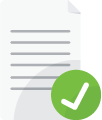Swift Six: Creating the strongest possible call to action
In this week’s video I’ll be looking at things you can do to make sure your website visitors become customers. It’s all comes down to creating the strongest possible call to action. It’s easier than you think, so let’s get started.
So, number one – you need an explanation of value. So really what you want to communicate within your call to action are the benefits that the user is going to get from clicking that button. So, is it that they are going to save some money? Is it that they are going to get something for free? Make it clear within that button the benefit of clicking that button.
So the second thing is relevance. You need to make the button content relevant to the copy that has come before it. There, hopefully, has been a logical progression as the user has read the content on the page and absorbed the images. And that call to action needs to be a summary, a go – to point that really summarises all that and gets them to do something.
The third thing is to make sure that you use descriptive words and descriptive action words, in particular, within the button. So you definitely do not want to be saying things like ‘Click here’, but instead focus on the action that you want the user to take. So that might be to take a free trial, it might be to buy now, it might be to even as simple as ‘progress to the next stage’ whether it would be next steps. So be clear and use descriptive words within your call to action.
So, number four is to keep things simple and by that I mean don’t put lots of call to actions on the page. Have one, perhaps two if it is a long page, one repeated at the top and the other one at the bottom. And the other thing to think about here is that call to actions often take place on the lower right hand’s side of the page. So it’s not there all the time, but you certainly more commonly find them there and, therefore, that might be where you actually want to put them on your website.
Number five – you need to introduce a sense of urgency within your call to actions. So, you’ve got them on your site, you want them to do something and you want them to do it now. You don’t want them to go away and think about it, look at your competitors, consider that it might not be a good idea. You want them to do something now so why not use words like ‘now’ and ‘today’ within your call to actions?
And then six – try testing it. Try different words, try different sizes and shapes of course, but, within your words, be sure to incorporate all these ideas and try different ones out, see which one works best.
So that was the 123-reg Swift Six and I’ll see you next time!
Further reading
You can watch the vital elements for a perfect landing page Swift Six here.
If you want to know more about how to test changes to your website, then check out our straightforward guide to getting started with A/B testing.








